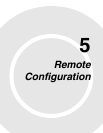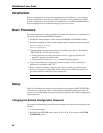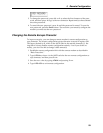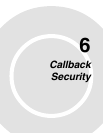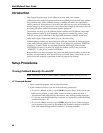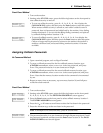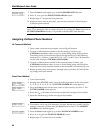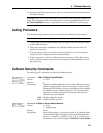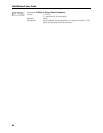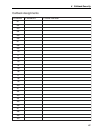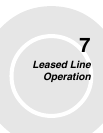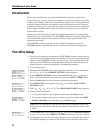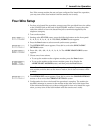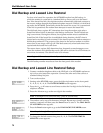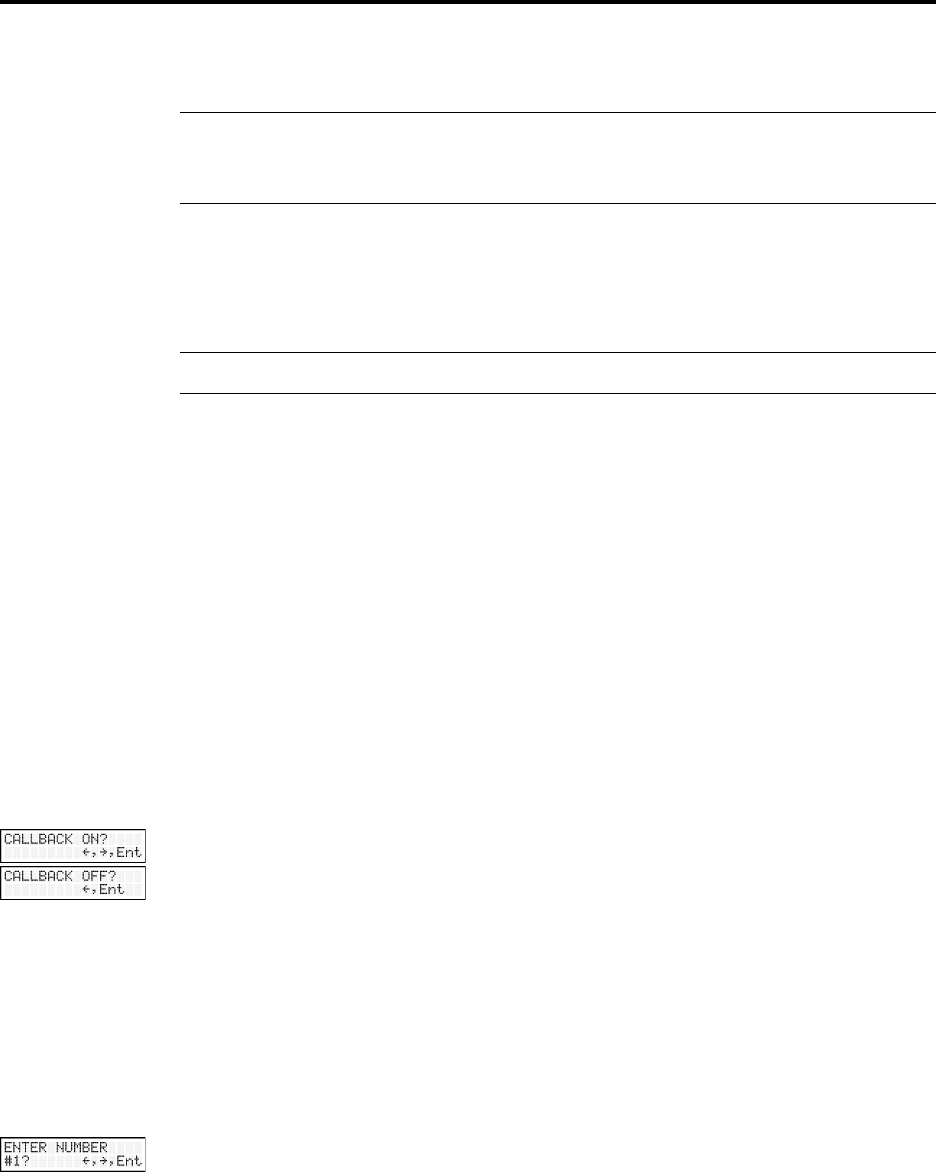
6 Callback Security
65
10. Repeat as many times as necessary, up to memory location 30, until all numbers
have been entered.
Warning: There is no way to review an entry to confirm that it has been entered cor-
rectly. If you attempt to look at a number entry by pressing the Enter button for an
ENTER NUMBER #n? screen, it is possible for you to accidentally erase the entry.
Calling Procedure
Use the following procedure to call a modem that has callback security enabled.
Note: Autoanswer must be enabled on the calling modem (S0=1 or S0=2).
1. Using a data communication program such as HyperTerminal, dial the number
of the callback modem.
2. When the connection is established, the callback modem responds with a re-
quest for a password.
3. Type the password for your modem, and then press ENTER. You have three at-
tempts to enter a valid password or be disconnected.
4. If the password is valid, the callback modem disconnects. Then, after a short
delay, it calls the number associated with the password and establishes a work-
ing connection.
Callback Security Commands
The following AT commands are used with callback security.
Command: #DB
n
Callback Enable/Disable
Values: n = 0 or 1
Default: 0
Description: Enables or disables callback security. When callback security is
enabled, phone number memory locations 0–4, used for quick
dialing and DTR dialing, become unavailable and are replaced
by callback security memory locations 1–30. The phone num-
ber memory locations and their contents are restored when
callback security is disabled.
#DB0 Disables callback security.
#DB1 Enables callback security.
Command: #CBN
y
=
x
Store Callback Number
Values: y = 01–30
x = dialing string
Default: None
Description: Stores dialing string x in memory location y. The dialing string
can include the digits 0 through 9 and any of the following char-
acters: #, *, comma (,), semicolon (;), W, A, B, C, and D. Up to
30 characters can be used. Example: AT#CBN01=9,16127853000.



